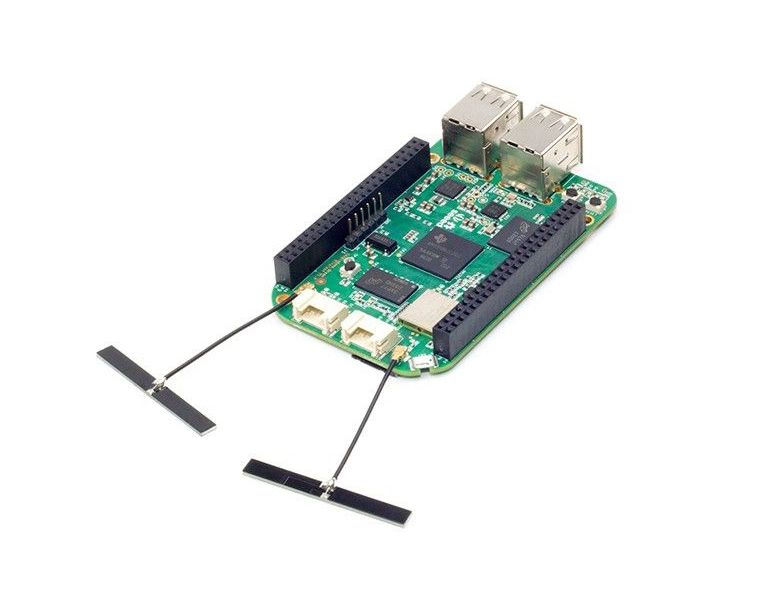
BeagleBone Green Wireless by SeeedStudio
SeeedStudio BeagleBone Green Wireless (BBGW) is a joint effort by BeagleBoard.org and Seeed Studio. It is based on the open-source hardware design of BeagleBone Black and developed into this differentiated version. SeeedStudio BeagleBone Green Wireless has included a high-performance flexible WiFi/Bluetooth interface and two Grove connectors, making it easier to connect to the large family of Grove sensors. The on-board HDMI and Ethernet are removed to make room for these wireless features and Grove connectors.
- Processor: Sitara AM3358BZCZ100 1GHz, 2000 MIPS
- Graphics Engine: SGX530 3D, 20M Polygons/S
- SDRAM Memory: 512MB DDR3L 606MHZ
- Onboard Flash: 4GB, 8bit Embedded MMC
- PMIC: TPS65217C PMIC regulator and one additional LDO.
- Debug Support: Optional Onboard 20-pin CTI JTAG, Serial Header
- Power Source: miniUSB USB or DC Jack, 5VDC External Via Expansion Header
- PCB: 86.44mm x 54.54mm / 3.4” x 2.15” 6 layers
- 88.98mm x 54.54mm x 15.41mm / 3.5” x 2.15” x 0.6”
- Indicators 1-Power, 2-Ethernet, 4-User Controllable LEDs
- 4x USB2.0 host
- Serial Port UART0 access via 6 pin 3.3V TTL Header. Header is populated
- Wi-Fi 802.11b/g/n 2.4GHz and Bluetooth 4.1 LE
- SD/MMC Connector microSD , 3.3V
- User Input: Reset Button, Boot Button, Power Button
- Video Out: 16b HDMI, 1280x1024 (MAX), 1024x768,1280x720,1440x900 w/EDID Support
- Audio Via HDMI Interface, Stereo
- Expansion Connectors:
- Power 5V, 3.3V , VDD_ADC(1.8V)
- 3.3V I/O on all signals
- McASP0, SPI1, I2C, GPIO(65), LCD, GPMC, MMC1, MMC2, 7 AIN(1.8V MAX), 4 Timers, 3 Serial Ports, CAN0, EHRPWM(0,2),XDMA Interrupt, Power button, Expansion Board ID (Up to 4 can be stacked)
- Weight 40.55g / 1.43oz
Purchase
Contribute
Have some info to add for this board? Edit the source for this page here.
Adafruit Blinka Installation
We use a special library called adafruit_blinka (named after Blinka, the CircuitPython mascot) to provide the layer that translates the CircuitPython hardware API to whatever library the Linux board provides.
For example, on Raspberry Pi we use the python RPi.GPIO library. For any I2C interfacing we'll use ioctl messages to the /dev/i2c device. For SPI we'll use the spidev python library, etc. These details don't matter so much because they all happen underneath the adafruit_blinka layer.
